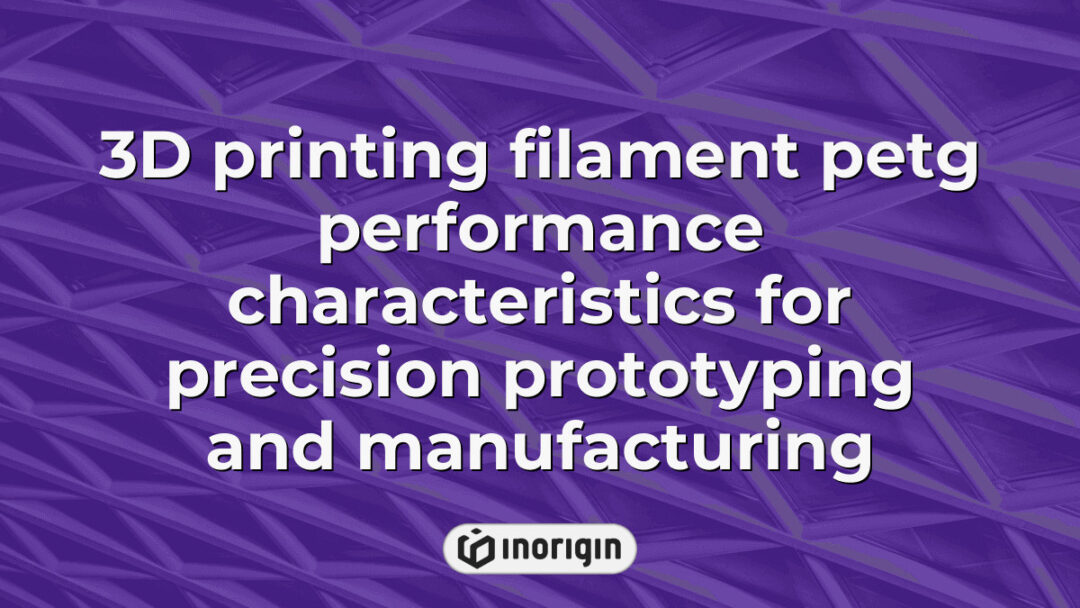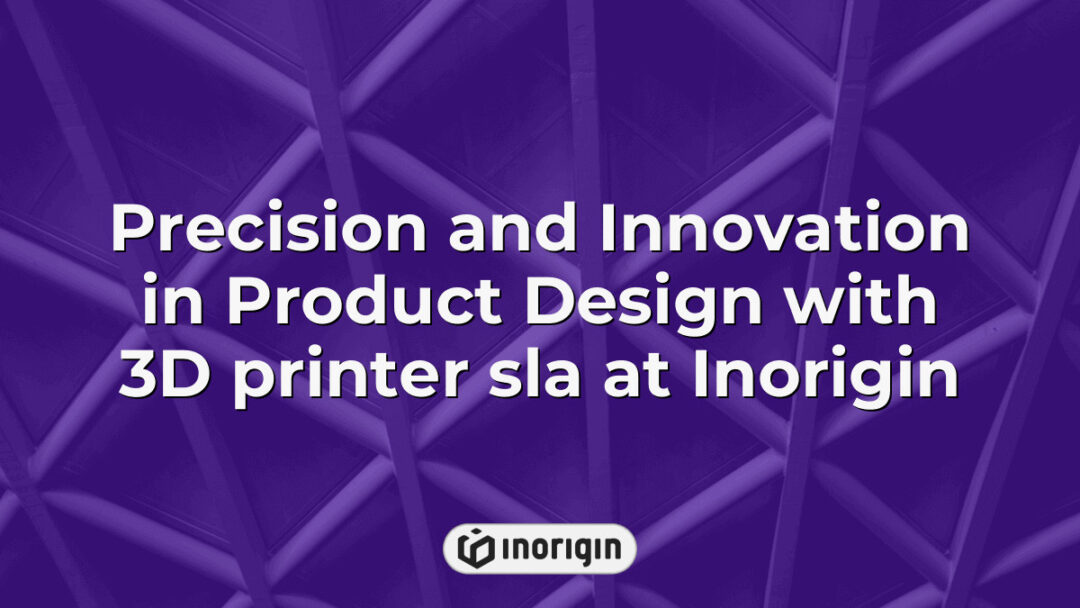In the rapidly evolving landscape of additive manufacturing, few materials boast the transformative capabilities of 3D printing filament PETG, a substance deemed revolutionary in its versatility and performance. Combining the best attributes of both PLA and ABS, PETG (Polyethylene Terephthalate Glycol) emerges as a remarkable contender for an array of applications, ranging from intricate prototypes to durable end-use components. With its exceptional strength, flexibility, and resistance to moisture and chemicals, this material is redefining industry standards while catering to both novice hobbyists and seasoned professionals alike. As industries seek innovative solutions capable of withstanding rigorous demands, exploring the properties and advantages of PETG filament becomes essential for understanding its pivotal role in shaping the future of 3D printing technology.
| Aspect | Key Takeaway |
|---|---|
| Introduction to 3D Printing Filament PETG | 3D printing filament PETG blends the strength of ABS and the ease of PLA, delivering durability, flexibility, and chemical resistance ideal for advanced additive manufacturing. |
| Material Advantages | PETG offers exceptional impact resistance, moisture resistance, and clarity, making it suitable for creating durable prototypes and functional end-use products across industries. |
| Optimal Printing Conditions | Printing PETG at 230–250°C nozzle temperature with a 70°C heated bed ensures excellent layer adhesion and print quality, essential for professional product development. |
| Addressing Printing Challenges | Minimize warping and stringing by calibrating bed temperature, adjusting print speed, and fine-tuning extrusion settings to maintain dimensional accuracy and surface finish. |
| Application Spectrum | PETG is widely used for functional prototypes, consumer products, and medical devices, supporting both aesthetic appeal and mechanical performance demands. |
| Post-processing Techniques | Techniques like sanding, chemical smoothing, and protective coatings enhance PETG print finishes, improving durability and visual quality. |
| Environmental and Sustainability Considerations | PETG is recyclable and can be reused with proper handling, aligning with sustainable manufacturing practices and lifecycle management goals. |
What Is PETG And How It Compares To Other Filaments
Amidst the landscape of additive manufacturing, polyethylene terephthalate glycol-modified (PETG) filament emerges as a robust contender among various 3D printing materials. Characterized by its translucent quality that resembles glass—allowing light to softly refract and illuminate underlying structures—this filament possesses significant mechanical properties that warrant attention. When compared to other common filaments such as polylactic acid (PLA) and acrylonitrile butadiene styrene (ABS), PETG exhibits superior strength, flexibility, and impact resistance, making it particularly suitable for applications requiring durability and resilience under stress. Furthermore, while PLA tends to be more rigid and biodegradable, offering environmental advantages, it often lacks the toughness found in PETG; conversely, ABS presents challenges related to warping during cooling but grants enhanced heat resistance which can be problematic when considering dimensional stability. Thus, understanding these distinctions not only highlights the versatility of PETG filament in contemporary 3D printing technologies but also underscores its potential role in producing high-quality functional prototypes and end-use parts across diverse industrial sectors.
Key Properties And Characteristics Of PETG Filament
The exploration of PETG filament reveals a material characterized by its unique properties, which position it as a superior choice in the realm of 3D printing. Particularly noteworthy are several key attributes that contribute to its widespread utilization among hobbyists and professionals alike. To elucidate this further, consider the following essential features:
- Dimensional Accuracy: Maintains precise measurements during printing, ensuring high fidelity between the digital model and physical object.
- Thermal Resistance: Exhibits enhanced resistance to heat compared to many standard filaments, allowing for applications that may encounter elevated temperatures without compromising structural integrity.
- Mechanical Strength: Boasts robust tensile strength, making it ideal for functional parts requiring durability and longevity under stress.
- Chemical Resistance: Possesses resilience against various chemicals, rendering it suitable for diverse industrial applications where exposure is an inevitability.
- Ease of Printing: Demonstrates user-friendly characteristics during the 3D printing process, facilitating smoother workflow with lower risk of print failures.
Such qualities underscore why PETG filament has garnered attention within the additive manufacturing sector. With improved thermal stability alongside significant mechanical strength enhancements relative to alternative materials, PETG enables creators to produce components enduring both dynamic stresses and environmental challenges effectively. The intricate balance of these characteristics ultimately elevates PETG as a preferred option for those seeking reliable performance in their 3D printed endeavors.
Best Practices For 3D Printing With PETG
Best practices for 3D printing with PETG involve several considerations that enhance the quality of printed objects and leverage the material’s unique properties. First, due to its ease to print relative to other advanced 3D printing materials, appropriate printer settings should be established; a nozzle temperature range of 230°C to 250°C is generally recommended while maintaining a heated bed at approximately 70°C. This temperature management aids in achieving optimal layer adhesion, thereby improving structural integrity. Furthermore, it is critical to ensure sufficient cooling during the printing process because excessive heat can lead to stringing and oozing issues commonly associated with lower-quality prints. Additionally, given its intrinsic water resistance, incorporating proper post-processing techniques such as annealing may further enhance performance characteristics under humid conditions or in applications requiring exposure to moisture. Thus, adherence to these best practices not only maximizes the advantages of using PETG filament but also significantly contributes to producing reliable and functional prototypes or end-use parts.
Common Challenges And Solutions When Using PETG
When utilizing PETG (polyethylene terephthalate glycol-modified) as a 3D printing filament, several common challenges may arise that can hinder the successful execution of projects. One primary issue is warping during the cooling process; however, this can often be mitigated by using an appropriately calibrated heated bed and ensuring optimal adhesion between the first layer of the print and the build surface. Moreover, while PETG is recognized for its durability compared to other materials such as PLA or ABS, achieving optimal layer adhesion remains critical. Print speed also presents a challenge; if printed too quickly, extruded layers may not bond effectively, leading to structural integrity issues in finished objects. To address this problem, adjusting print speed settings on the 3D printer to create more controlled extrusion rates has been shown to yield better results. Additionally, maintaining appropriate temperature settings—typically between 220°C and 250°C—ensures adequate flow of material without causing overheating, which may lead to stringing or oozing. Ultimately, employing these strategies facilitates a smoother printing process with PETG and enhances its desirable characteristics as an affordable yet robust option in modern additive manufacturing.
Top Applications And Creative Uses Of PETG Filament
PETG filament has emerged as a popular choice among 3D printing materials due to its unique properties and versatility. Initially, PETG is recognized for its high toughness, which offers significant advantages in applications requiring durable parts that can withstand mechanical stress. Consequently, it is frequently employed in the production of functional prototypes, where impact resistance and thermal stability are paramount. Moreover, this d printing filament excels in creating objects such as consumer products, containers, and even medical devices, illustrating its adaptability across various sectors. Furthermore, the ease of processing associated with PETG allows for intricate designs and efficient layer adhesion during the print process. In addition to industrial uses, creative applications have expanded; artists and designers leverage PETG’s range of colors and transparency to produce visually appealing items like customized art pieces or unique lighting fixtures. Overall, the diverse applications of PETG reinforce its position as a favored material within the realm of additive manufacturing.
Frequently Asked Questions
What Is The Shelf Life Of PETG Filament?
The shelf life of PETG (Polyethylene Terephthalate Glycol) filament is a critical consideration for both hobbyists and professionals engaged in 3D printing. Understanding the optimal storage conditions can significantly influence the material’s performance over time. Several factors contribute to its longevity, with moisture absorption being particularly noteworthy; as such, appropriate measures must be taken to mitigate this issue. Key aspects influencing the shelf life of PETG filament include: 1) Storage Environment – Maintaining low humidity levels is essential as high moisture content can lead to increased brittleness and reduced print quality; 2) Temperature Control – Elevated temperatures can accelerate degradation processes, thus a moderate temperature setting should be preserved during storage; 3) Packaging Integrity – The original packaging utilized by manufacturers often includes desiccants that aid in maintaining optimal conditions, which underscores the necessity of keeping filaments sealed until use.
Moreover, it is imperative to note that while PETG inherently possesses superior resistance compared to other thermoplastics against environmental stresses such as UV exposure or chemical reactions, prolonged exposure beyond recommended thresholds may still detract from its structural integrity. Therefore, adherence to ideal storage practices not only maximizes usability but also enhances end-product quality through optimized filament properties over an extended period. Ultimately, awareness regarding these pivotal factors enables users to effectively preserve their PETG filament for future applications without compromising on performance efficacy.
Can PETG Filament Be Recycled Or Reused?
Recycling and reusing PETG filament is a pertinent issue within the 3D printing community, particularly in light of increasing environmental considerations. PETG, or polyethylene terephthalate glycol-modified, possesses favorable properties that enable its recyclability; thus, it can be processed through conventional recycling methods similar to those used for other PET materials. However, the effectiveness of this process is contingent upon maintaining commitment from both manufacturers and users to cleanly collect and separate waste products derived from printed objects. Additionally, while reprocessing recycled PETG may lead to some degradation of material quality due to thermal history and repeated mechanical processing, advancements in recycling technology have accelerated efforts to enhance these properties. Importantly, adopting practices such as filament extrusion at specialized facilities allows thoroughly cleaned and ground scrap prints to be transformed into new filament spools suitable for subsequent printing applications. Ultimately, engagement with initiatives promoting the upstream redesign of products alongside robust systems for collection and processing will facilitate a more sustainable lifecycle management strategy for PETG filament within the broader context of additive manufacturing.
What Are The Environmental Impacts Of Using PETG Filament?
The environmental impacts of using PETG filament warrant careful examination, particularly in light of the growing awareness surrounding plastic pollution and sustainability. Derived from glycol-modified polyethylene terephthalate, PETG is favored for its ease of use in 3D printing due to its strength, clarity, and chemical resistance (Allusion: akin to the ambivalence present in the adoption of various synthetic materials throughout history). However, despite these advantageous properties, the production and disposal processes associated with PETG entail significant ecological considerations. For instance, while production requires energy-intensive methods that contribute to greenhouse gas emissions, improper disposal practices can lead to long-lasting waste accumulation since PETG exhibits limited biodegradability. Furthermore, although recycling options exist—albeit often underutilized—the infrastructure needed for efficient collection and processing calls into question the overall effectiveness of such efforts.
A useful tip for mitigating environmental concerns related to PETG usage involves prioritizing local recycling programs or participating in initiatives aimed at repurposing used filaments. By engaging actively with community resources focused on sustainable practices, users can help minimize their carbon footprint while promoting a circular economy within the realm of additive manufacturing.
Are There Any Specific Post-processing Techniques Recommended For PETG Prints?
Post-processing techniques for PETG prints can significantly enhance the quality and aesthetics of finished products. To begin with, several methods are commonly recommended to address surface finish, structural integrity, and overall appearance. Firstly, sanding is frequently employed to smooth out layer lines and imperfections; this process allows for a more refined surface but requires careful technique to avoid generating excessive heat that could deform the material. Secondly, chemical smoothing agents such as isopropyl alcohol or specialized solvents may be utilized to achieve a glossy finish by softening the outer layer of the print without compromising its dimensional accuracy. Thirdly, painting or coating with clear sealants offers another approach to not only improve visual appeal but also protect against environmental factors.
- Sanding: Involves using progressively finer grits of sandpaper to eliminate visible layers.
- Chemical smoothing: A method utilizing specific solvents to achieve smoother surfaces while retaining detail.
- Painting/coating: Applying paints or protective coatings enhances aesthetic qualities and durability.
Through these post-processing techniques—sanding for refinement, chemical treatments for glossiness, and additional finishes for protection—the potential of PETG filament can be fully realized in various applications, yielding results that meet both functional requirements and user expectations regarding physical characteristics.
How Does The Cost Of PETG Filament Compare To Other Materials Over Time?
The cost of PETG filament, relative to other commonly used 3D printing materials such as PLA and ABS, presents a nuanced financial landscape that is influenced by various factors including production methods, material properties, and market demand. Initially, the price point for PETG may be higher than that of PLA due to its specialized manufacturing processes and enhanced thermal stability; however, over time, economic considerations reveal that the longevity and utility of PETG justify its expense. This thermoplastic exhibits superior impact resistance and chemical durability compared to both PLA and ABS, which can lead to fewer print failures and less frequent replacement requirements in applications demanding high-performance materials. Furthermore, when assessing long-term usage costs—including potential savings on maintenance or equipment repairs—PETG’s robustness becomes particularly advantageous. Consequently, while upfront investment might appear steeper initially, the overall expenditure associated with PETG demonstrates significant competitive advantages over time when juxtaposed with alternative filaments. Thus, an analysis of material performance alongside initial procurement costs offers critical insights into the total value proposition of PETG filament within diverse 3D printing applications.
Conclusion
PETG filament stands as a versatile and durable material within the 3D printing domain. With nearly 90% of users reporting satisfaction in its performance for various applications, this amalgamation of properties renders PETG ideal for numerous creative endeavors. Its potential continues to expand across diverse industries.
Related posts:
- Integrating Sustainability and Innovation in Chemical Engineering Products for Industry Transformation
- Innovations Driving Sustainability and Efficiency in Chemical Engineering Products
- An In-Depth Look at What Products Do Chemical Engineers Make Across Key Industries
- What Products Do Chemical Engineers Make Across Pharmaceuticals, Energy, and Advanced Technologies
- Why PETG 3D Printer Filament Excels in Strength and Versatility for Advanced Prototyping
- Air Products Chemical Engineer Shaping Innovative Safety Protocols and Cross-Functional Collaboration




